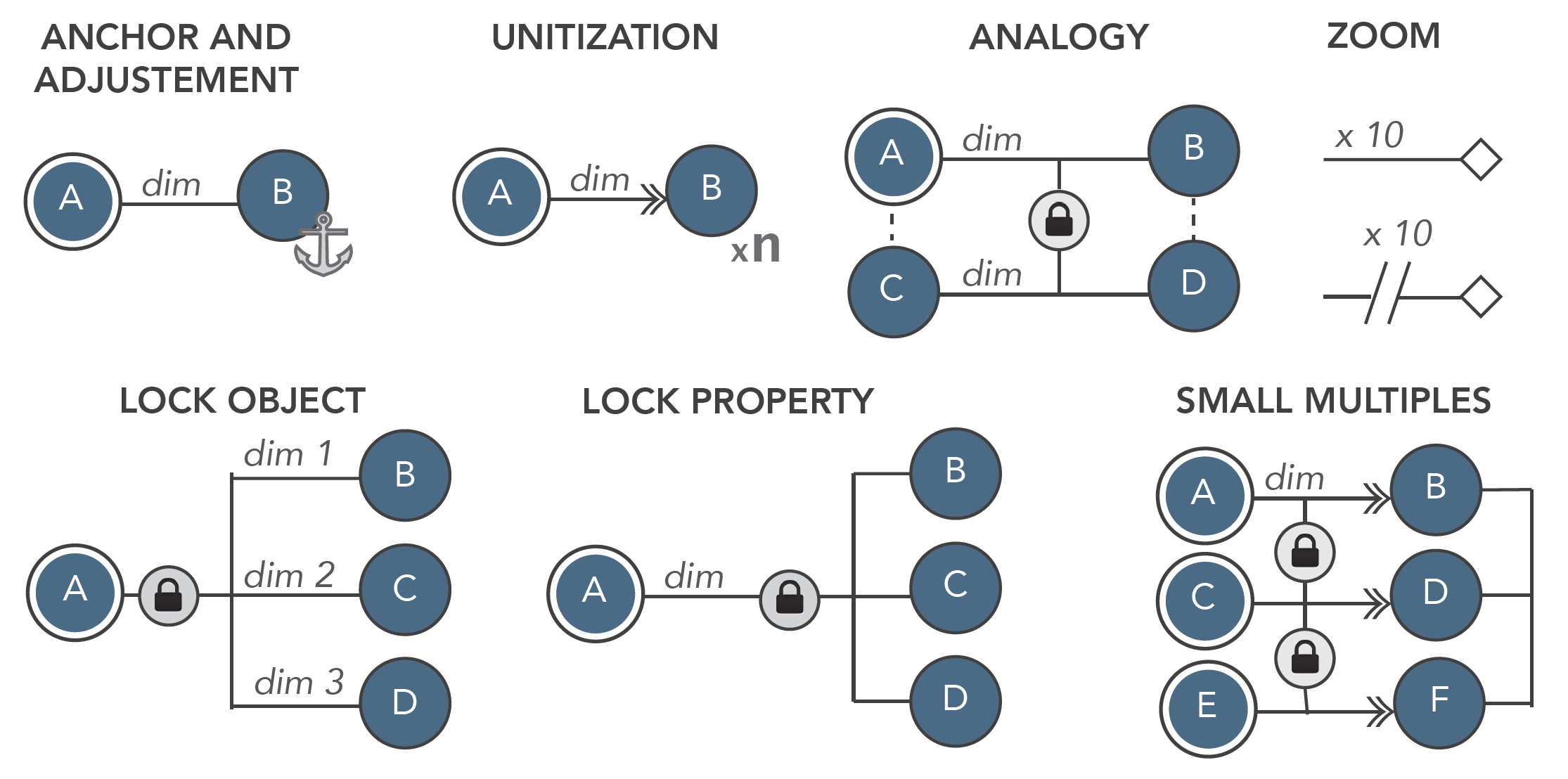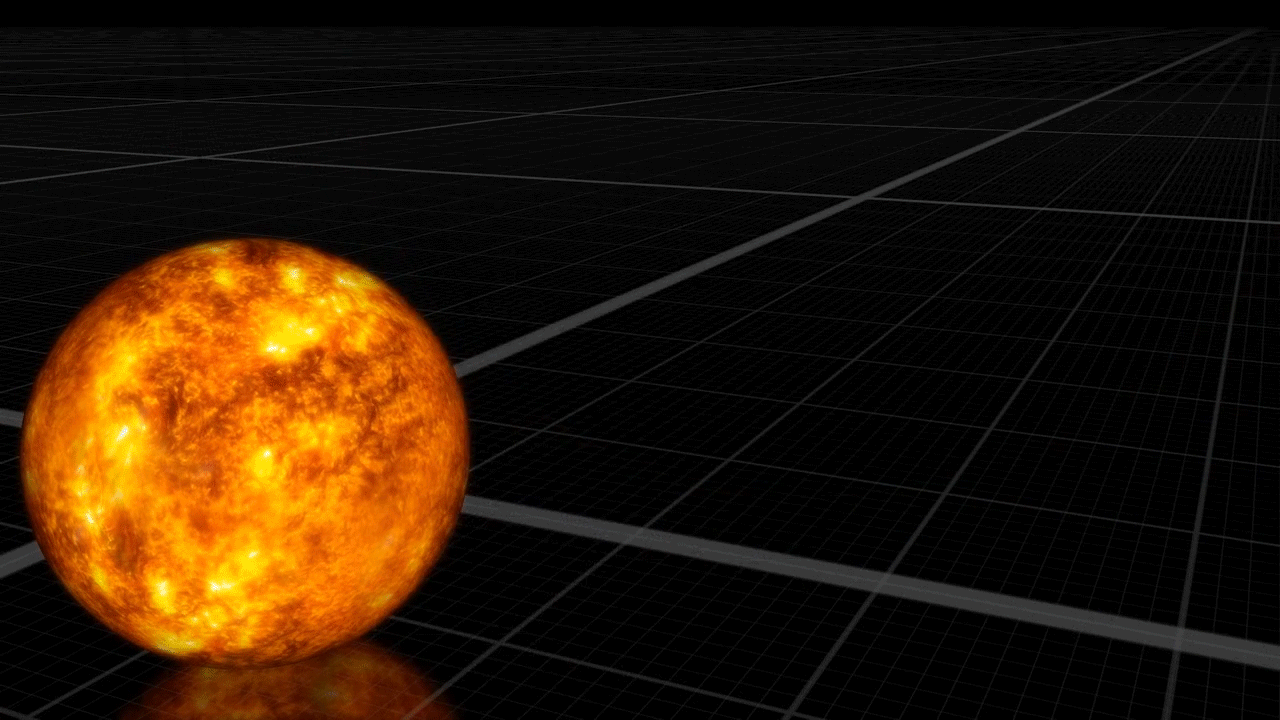Visual Language
One of the main contribution of the paper is to introduce a visual language as a mechanisms to support a systematic break down of visual material related to scale explanation. While the language can get complex, the main graphic decomposition mechanisms are as below:

Measure Relations
Comparison
A comparison is a relation between objects that results in equality, inferiority, or superiority. There usually are types of comparisons: exact and approximate. Exact relations concern cases where magnitudes of objects can be accurately compared along a property (e.g., a $100 bill is 10 times superior than a $10 bill in terms of monetary value). Approximate is when the magnitudes are vaguely defined d (e.g, the height of an average person).
Containment
A containment is when objects are placed within a container, both objects become linked by a containment relation. Containers are common in concrete scales especially because they allow several objects into a single entity,which can facilitate comparison.
Unitization
A unitization is an improvised—yet subjective—systematization of units where observers can break down scales, using a preferred new unit, into more specific and relatable chunks.
Below is an illustration of super-massive black hole (complex measure) measured in suns (simple unit).
Analogy: Simultaneous Pairwise Comparison
An analogy conveys the size of relationships by comparing the size difference between a pair of objects, the target, and another pair of more familiar objects: the base.
Zoom
A zoom is the progressive adjustment and containment when the magnitude is too large to both see details on a relative scale while having an overview of the absolute scale. When the tools are dynamic, the zoom effect is executed through animation.
Lock
A lock strategy is the progressive adjustment and containment. The general idea builds on locking the possible relation of an object to a specific type as a constraint.
Small Multiples: Build a Collection
The small multiples are the small elementary objects juxtaposed together to aid in establishing a concrete scale through the use of a singular measure relation.
Related Publications
- Visualizing the Scale of World Economies. Owen Cornec, Romain Vuillemot.

